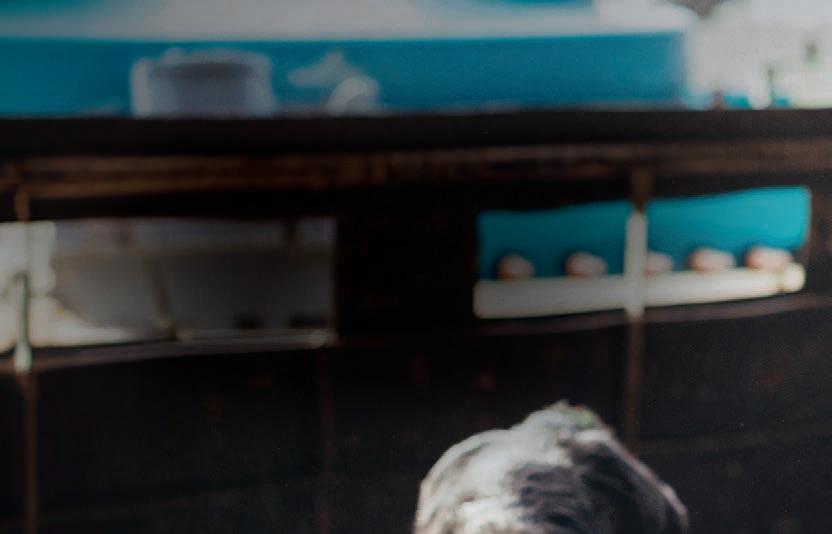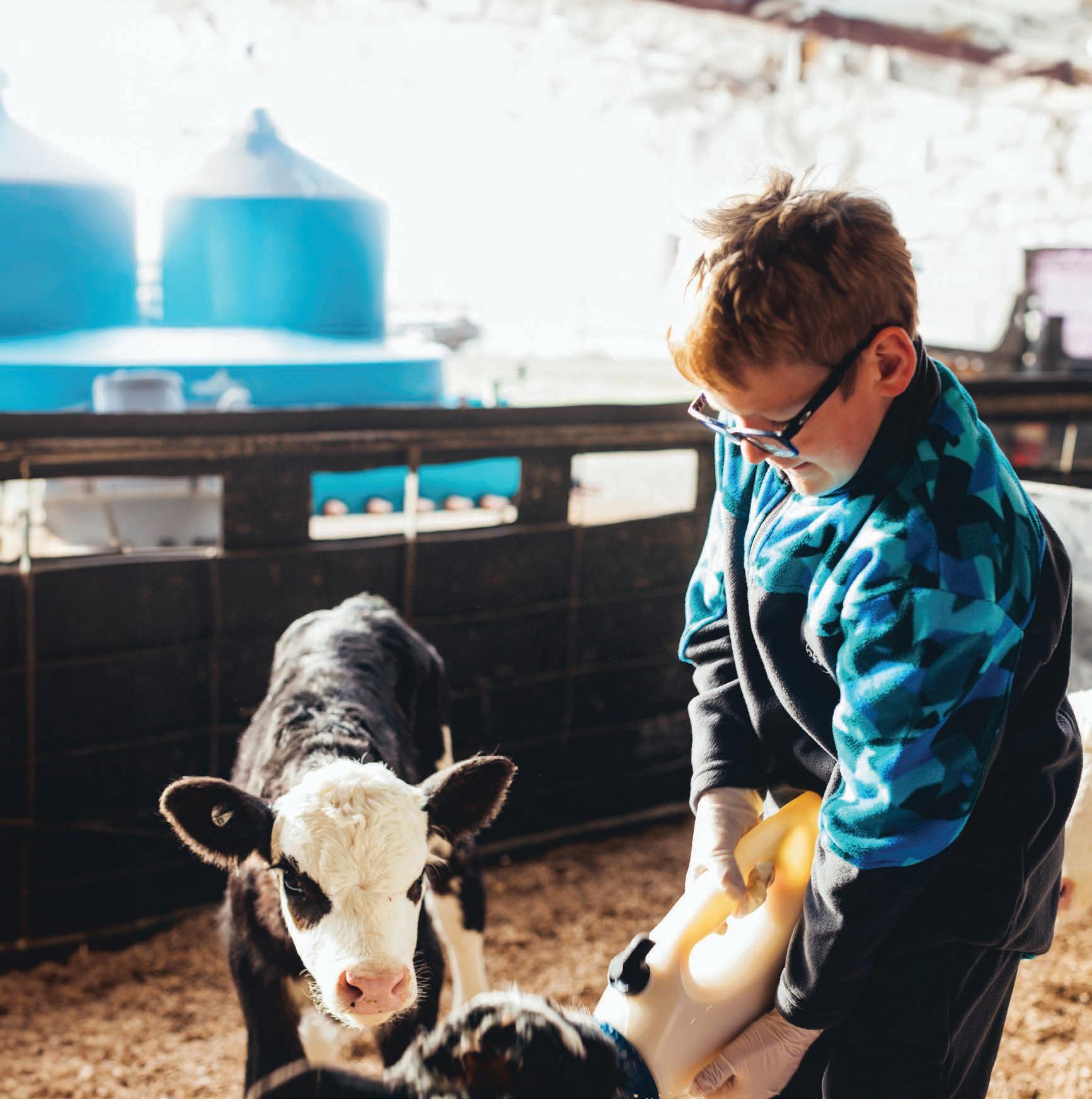Tradition of excellence
Taranaki pair repeat parents’ win 33 years on

PLUS:
Top dairy woman

➜ Helping others get the job done
➜ Staff shortages continue


Taranaki pair repeat parents’ win 33 years on

PLUS:

➜ Helping others get the job done
➜ Staff shortages continue


We’re focused on improving udder health and reducing the risk of mastitis to increase your farm’s productivity and profitability.
By partnering with you to protect your cows, your farm’s biggest asset, our team of experts are able to provide best-in-class solutions to reduce somatic cell counts and improve your mastitis prevention strategies - to boost your milk production and quality. Because more milk in your vat, means more money in the bank.
Unlock your farm’s profit potential with FIL. Get in touch with your local Area Manager on 0508 434 569.



Mastitis is a condition characterised by inflammation of the mammary gland, resulting in reduced production, lost milk, and increased farm costs.
Having good teat care practices and selecting the most appropriate teat spray for the herd is crucial in the control and prevention of mastitis says FIL National Sales Manager, Colin May.

While iodine-based and chlorhexidinebased teat sprays are both effective in reducing the risk of mastitis, studies have shown that there are differences in their efficacy against different mastitis pathogens.1
Iodine-based teat sprays work by penetrating the cell wall of bacteria, disrupting cellular functions, and killing the bacteria.
“Iodine teat sprays are broad-spectrum disinfectants effective against a range of pathogens, including grampositive and gram-negative bacteria, such as Staphylococcus aureus and coagulase-negative staphylococcus (CNS),” says Colin.
“Iodine-based teat sprays are oxidisers, known for their quick action,” he adds.
On the other hand, chlorhexidine-based teat sprays work by disrupting the cell membrane of bacteria.
“They are also effective against a range of pathogens, however, studies have shown that they are less effective against gramnegative bacteria and some strains of staphylococcus. 1
“Chlorhexidine is a popular option for farmers as it is non-irritating and offers a long residual activity between milkings.
In contrast to New Zealand, in the United States, chlorhexidine-based teat sprays are not used as they are not effective against the pathogens prevalent in barn environments, such as Escherichia coli (E. coli). This pathogen can be found on some farms in New Zealand with barns, feed pads or wet areas.”
Colin says it is important for farmers to consider the specific mastitis pathogens present in the herd when choosing between an iodine or chlorhexidine teat spray, as well as other factors such as farm environment and teat condition.
For a tailored teat care plan that is right for your dairy herd, talk to your local FIL Area Manager on 0508 434 569.
1 Watters, Rick. (2019). Classes & types of teat dips Quality Milk Production Services, Cornell University Animal Health Diagnostic Center. Retrieved from www.webpages.uidaho.edu/avs472/Word/Mastitis% 20and%20Milking/Classes-Types-of-Teat-DipsCornell.pdf.
July
021 217 3590 sommer.limited@gmail.com
CHEYENNE NICHOLSON 021 044 1335 offthehoofmedia@gmail.com
ANNE BOSWELL 027 394 3904 anne@anneboswell.co.nz
Sales ANDY WHITSON 027 626 2269 Sales & Marketing Manager. andy.whitson@agrihq.co.nz

STEVE McLAREN – Auckland 027 205 1456 steve.mclaren@agrihq.co.nz






With most of the country in the grip of wet conditions, the team at WeatherWatch look ahead to see what farmers can expect over the cold winter months.
You know it’s wet underfoot when 15mm in winter is forecast and you get a rash of complaints. Despite a bit of a balancing act over recent months to dry things out, many regions are still leaning wetter than average as we hit the halfway mark of 2023.

The very wet start to the year has only partially broken, with rain frequently falling in eastern and northern parts of both main islands, similar to the first half of the year but not as intense.
Despite the El Niño building we’re still in a neutral, and therefore chaotic, set-up.
all year round but normally by now we’re seeing more Southern Ocean storms too.
The shape of the high pressure zones over Australia and NZ has – for now –protected NZ from too much cold, but the downside from that is it’s giving us more northerlies (warmth) and rain. In fact the warmer set-up incredibly saw most regions either entirely frost-free in autumn or very close to it.
The many northerly, easterly and westerly quarter winds are all pushing our nationwide temperatures up, even despite a brief frosty burst of weather on the week of Fieldays (for example we had -5degC between Taupo and Rotorua, and -7degC in Central Otago).
Every scientific indicator we monitor suggests El Niño is not only building, but it’s looking quite intense. The weather pattern around New Zealand and Australia is showing some signs of this developing, though for NZ in particular it’s not yet locked in.
The procession of low pressure zones from the Tasman Sea is a little unusual for this late in the year. Sure, we get lows from the Tasman
Despite the wet and the mud, we’re also trying to cautiously warn of a sudden reversal later this year. While RuralWeather.co.nz loves to mention that “New Zealand is mostly two mountainous islands partially in the roaring forties, so anything can happen”, the global trend of both El Niño and a Positive Indian Ocean Dipole means Australia and NZ may see a drier trend emerging over spring and summer.
Our location on Earth gives us that fantastic silver lining that allows us to say we might buck the international trend and not have a super dry El Niño, but we do need to be mentally prepared for that dry – as early as now, while it’s still wet and muddy.
By the way, the Indian Ocean also has a type of “La
Niña / El Niño” climate driver, called the Dipole. Like we’re seeing with El Niño emerging, we’re also seeing a Positive Dipole emerging and that encourages dry weather along the eastern side of the Indian Ocean too – a potential dry double whammy for Australia this spring and summer with drier than usual conditions expected on both the western and eastern sides of the continent.
Some Indian Ocean rainmakers do eventually make it to NZ, not a huge amount, but enough to be noticeable whenever the odd tropical depression crosses the western side of Aussie and ends up coming out near the Tasman Sea or Southern Ocean. So having a drier setup over the eastern Indian
Ocean as well as the western Pacific Ocean is possible in the months ahead.
But again, it’s all about our location, location, location. Our small size, our mountains and ranges and our isolated location out at sea mean NZ can buck some international climate trends. A good and recent example: we just had three La Niña events but only the last one brought extra rain (the previous two brought North Island droughts).
So despite the usual dry concerns over El Niño, it is good for the soul to remember that our location on our Earth means NZ can get sudden surprise rain when we should be in drought. It’s a silver lining to hold on to as we face some weather uncertainty this spring and summer. n
“Our small size, our mountains and ranges and our isolated location out at sea mean NZ can buck some international climate trends.”
Everyone does their bit on a farm run by a busy emergency department doctor and her husband – but farming excellence also runs in the family.
Hayden and Bridget Goble are the 2023 National Dairy Industry Award Share Farmer of the Year winners. They are equity partners in a 231ha farm at Tataramaika, Taranaki, milking 565 cows.
 Photos: Ross Nolly
Photos: Ross Nolly
Hayden and Bridget Goble made history when they won the dairy award whose inaugural winners, decades ago, were Hayden’s parents.
When the 2023 New Zealand Dairy Industry Award



National Share Farmer of the Year winners were named earlier this year, it was a history-making moment.
For winners Hayden and Bridget Goble from Taranaki, the win came 33 years after his parents, Keven and Diane Goble, won the inaugural NZDIA National Sharemilker of the Year title, as it was then known.
It is believed to be the first time in the history of

the awards that the son or daughter of a previous national winner has won a national award.
The Gobles work as a family farming equity partnership with Hayden’s parents on a 231ha (200ha effective) Tataramaika farm his parents purchased in 1991 milking about 565 cows.
This is their sixth season on the farm and, with Bridget working as an Emergency Department doctor for Te Whatu Ora – Taranaki, they have become accomplished at juggling their busy work roles and raising their family. They have two children –Anne, 4, and Leonard, 2, and a new baby due to make an appearance in September.
As if life wasn’t busy enough for the couple, entering the New Zealand Dairy Industry Awards made their lives a little bit more so. However, on the flip side, the breadth of the awards judging process got them to put every aspect of their business under the microscope. Having such high-calibre judges visit their farm and examine their business highlighted the areas that could be improved.
• Farm owners: Kevin and Diane Goble, Hayden and Bridget Goble in equity partnership

• Location: Tataramaika, Taranaki
• Farm size: 231 ha (200ha effective), 12.5ha runoff and 2.5ha leased runoff
• Cows: 565 predominately Friesian crossbred cows.
• Production 2022-2023: 273,000kgs milk solids, 483kg MSper cow.
The win is a validation of their farming practice.
“You are judged twice for the Regionals and get to know your business very well under that scrutiny,” Bridget says.


“Your presentation improves drastically between the first and last judging. The feedback you get from each round of judging is then used to improve farm and business practices. You’d never change that much in a four-month period if it wasn’t for the judging and feedback.”
They went into the National awards with no expectations. They didn’t want their enjoyment to depend on whether they won or not.
They wanted to enjoy the experience, and winning would just be the icing on the cake.
The couple have been overwhelmed by the amount of community support they’ve received.
“We honestly didn’t think that we would win. It was exciting and overwhelming to hear our name called out. We may have won, but so many people helped us along the way,” Bridget says.
“Our staff have a WhatsApp group and they changed the cover photo to one of us with the award. They’re proud of
Continued page 10
“Your presentation improves drastically between the first and last judging. The feedback you get from each round of judging is then used to improve farm and business practices.”
Dr Bridget Goble
the award because they’re part of it,” Hayden says. The couple encourage other farmers to enter the awards
and stress that entrants don’t need to have the perfect farm. It’s not all about the numbers, it’s about the farmers as










































































whether you place or not. It was great meeting all of the competitors, not just those in the sharemilker category. We look forward to those relationships continuing,” Bridget says.
Growing up on the family farm, Hayden knew he wanted to be a farmer. He attended Ōkato’s Coastal Taranaki School before going to Telford – Southern Institute of Technology for two years to study for a Diploma in Agriculture. He returned to work for his parents on the family farm for 18 months before heading overseas for 18 months. He returned to the farm for a further two years as farm manager.

people, and how they operate.

“Entering the awards will make you a better farmer


gNZI is the most reliable tool for predicting the future performance of young sires’ offspring. gNZI has accurately predicted how international sires would rank once they get a daughter-proof here in New Zealand.
With the gNZI dairy farmers can select with confidence and drive their herds forward.

During that period he raised young stock to build a herd and took a 50:50 sharemilking job milking 550 cows for his grandparents on their 180ha Maxwell farm. It was around this time that he met Bridget.

“We met in 2011 through another doctor/farmer couple. I worked at Taranaki Base Hospital for the first two years before transferring to Whanganui Hospital in 2012,” Bridget says.
“I then spent 18 months at Palmerston North Hospital until I needed to move to Waikato Hospital for training. Hayden’s mum suggested that we move together rather than having a five-year longdistance relationship.”
Even though Hayden had successfully sharemilked for five years, he never heard back from any of his Waikato job applications. He ended up taking a farm manager’s job on a Morrinsville farm.
“It was good timing, because the payout dropped to around $4 and he was receiving a manager’s salary. New Plymouth hospital then became accredited for my training, and because we were missing our family and the sea, we set up an equity partnership company with Hayden’s parents and moved home,” Bridget says.
Forming an equity partnership allowed the farm to move forward with one set of goals. The company was
set up with all aspects of the business included.
“Sharemilking would’ve been more lucrative, but the farm needed work done on it. We’ve been able to make capital investments in the farm that would have been harder to justify from a farm owner’s perspective if we were sharemilking,” Hayden says.
The couple want to live on the farm permanently, and are keenly focused on setting it up correctly for the future. As sharemilkers they may have been able to own the farm faster, but would then have needed to begin investing in its infrastructure.
“It’s good to be making the changes and utilising the new infrastructure now. We built a large covered feedpad and changed to a one herd system, which necessitated constructing new cow yards. This was done to make the farming operation more labour efficient,” Hayden says.
The farm nestles between Egmont National Park and the coast, and the mountain and ocean give the farm its unique topography and climate.
“You can’t get a tractor over a third of the farm, which makes pasture management
challenging. Those areas can’t be mown or re-grassed, we only graze those paddocks during good weather. If you damage any part of them, they’re done for the year,” Hayden says.
gets hit more regularly by wet northerly storms. It usually receives 2,000-2,500mm of rain, but this year there’s been so much rain that Hayden has given up measuring it.
Last season the herd produced 273,000kg milksolids and 483kg MS per cow. This is lower than their five-year average of 297,000kg milksolids from 610 cows. Last season they peak milked 565 cows and are trying to find the happy medium of profit and production.

The farm is run as a System 4 and they feed 2t of bought in supplementary feed per cow. They’re aiming to reduce the dry feed by 400kg per cow, because currently they’re not making an adequate margin on it.
The mountain and sea greatly influence their climate, and Hayden often checks the weather forecast on an hourly basis. The climate is warmer compared to when he was growing up, and there have been no frosts in the past two years.
The farm is mostly summer safe, but can have a dry year once every five years. It now
“Ten years ago it was all about production and the amount of kilos per cow. Now it’s come back to ‘What’s your profit?’ It’s easy to chase high production per cow and be worse off,” Hayden says.
“Reducing the herd size and the amount of supplementary feed should help counter the high farm working cost inflation. But I can see flow-on
Continued page 12
“Entering the awards will make you a better farmer whether you place or not. It was great meeting all of the competitors, not just those in the sharemilker category.”
Dr Bridget Goble
effects for the environment due to less purchased feed and a lower stocking rate.”
The farm has a 12.5ha runoff and 2.5ha leased runoff as support blocks used for maize silage, which forms the bulk of their supplementary feed and is used to winter some cows. They grow 10ha on farm, 15ha on the runoff, and buy in 250t.
They feed 1.1t of maize and 800kg of PKE per cow per season. Recently they’ve fed 250kg dry matter of DDG, 250kg DM of tapioca, and 450kg Proliq per cow. It’s processed through their mixer wagon along with the required minerals.
The also make 30ha of pit silage, and baleage is made from whatever the season gives them. They can usually rely on the pit silage, depending on what sort of late spring they have. If it gets dry, they may only get 100 bales of silage, yet in a good growing year they can crop 300 bales.
Supplemental feeding is heavy through to early spring to hold the round length. During the flush, the amount of supplement is reduced to match the production with the pasture.
A 20-day round is utilised for most of the season, until midJanuary when it’s lengthened to the mid-20s. If it becomes dry it’s increased to 30 days.
During March a 30-day round is used, 40 days in April and





50 days in May. Depending on the weather, their winter round is 70 to 90 days.
“During winter the hay and maize is fed on the feedpad. The feedpad has rubber matting so we can use it to stand the herd off during inclement weather. During calving, every mob comes onto the feedpad daily,” Hayden says.
‘It’s a bit of a juggling act, but the feedpad has two sides, so one side is free for a second mob. If a mix-up occurs, we just run them through the cowshed drafting system.”
Calving begins mid-July and finishes mid-September and they keep 25% for replacements. Calves are collected twice daily during
the busy period because of the farm’s terrain. If the calves are left to their own devices for too long, they wander into a gully, requiring a search to find them.
The calves are collected before the cows come onto the feedpad and another pick-up occurs in the afternoon. The calved cows are automatically drafted out when they go through the yards after feeding.
The calves are fed colostrum for three weeks before transitioning to milk powder. Meal is fed from the start, and they have access to the paddocks when they’re three weeks old.
There is one shed for the new calves and last season a
new purpose-built spacious calf shed was constructed for the older calves. It opens onto paddocks allowing the calves free access to the pasture. There are 40-45 calves per mob and they’re fed with a 60-teat feeder.

Weaning occurs when calves weigh around 110kg . They are sent to Te Kuiti-based Koromiko Grazing Ltd before Christmas, where they stay for 18 months.

Artificial insemination begins on October 10 and lasts for nine weeks. Premier Sires are used for five weeks, before two weeks of Murray Grey used as a marker. Shortgestation crossbred dairy semen is used for the last two weeks.

The heifers are mated to a Jersey bull 10 days earlier than the main herd.
Their Friesian cows have now become too large for their farm. The cows usually weigh around 520kg, but their latest heifers were 560kg. Heavy animals require higher maintenance during winter and take a toll on the soil.
Typically, nominated bulls have always been used. This is the first year that they’ve used Premier Sires Daughter Proven team, solely because many of the bulls Hayden preferred were in that team.
For the past two seasons they’ve been using KiwiCross semen over their mostly Friesian herd to breed towards a crossbred herd.
“We want cows that are around 500kg and achieve a 1:1 ratio of milk solids to bodyweight. Even though there was sometimes 100kg of liveweight difference between the Friesians,” Hayden says.

“We aim for fertility, sound udders, capacity, and the bulls should have a good BW. The crossbred’s fertility BVs are massive compared to Friesians.”

Four years ago the herd was


fitted with collars, which has cut out an entire labour unit during mating. There’s now no need for tail painting or for someone at the cowshed “cups off” station scrutinising the tail paint, because any cycling cows are automatically drafted.
Tail painting has proved to be less effective than identifying cycling cows with the collars. The collars showed that they were putting up cows for AI that weren’t in heat.

“They were cows that’d rubbed off some tail paint and then you did the ‘If in doubt, put her up’ scenario. We now use 20% fewer straws. We don’t pregnancy test because if the collars show that the cows are still cycling every 20 days, we know they’re not pregnant,” Hayden says.

The collars have also enabled them to remove bulls from the farm and solely use AI. They say not having bulls on the farm eliminates a potential health and safety factor.
The collars have the added benefit of monitoring animal








Continued page 14

health and picking up any issues quickly.
“We now notice E coli mastitis very early. When a cow’s rumination crashes, the collars alert us before we’re able to notice the problem. We can quickly treat the cows and save most of them,” Hayden says.
“We recently had a cow with Hardware Disease. Usually, by the time you’ve noticed, it’s too late to save the cow. If you pick it up early you can usually save them, and that’s exactly what the collars enabled me to do.”
The collars record and monitor the rumination minutes on a daily basis. During summer, if it’s seen to be going too high it usually means that the pasture quality is slipping and the herd is getting too much fibre.
When it drops below a certain threshold during spring it’s a prompt to add more feed. When rumination drops, the drop in milk production doesn’t occur until the following day.
The collars also monitor summer heat stress. “We let the cows onto the covered feedpad at 10.30am. When the
outside temperature reaches 20degC, their heat stress quickly rises. The feedpad is 4degC cooler, and as soon as the cows get into the shade the heat stress immediately drops,” Hayden says.
Over the past few years they’ve focused on reducing their mastitis rates and the herd SCC has dropped to 100,000-120,000.
“We use a Mastatest system. Every infected cow’s sample is cultured and a treatment recommendation is e-mailed to me within 24 hours. After herd testing, we draft the cows with a high SCC and test them,” Hayden says.
“We cull cows that have chronic mastitis. You don’t
notice much of a difference in the first few years, and then suddenly you make a drastic improvement. We once needed to strip the herd every week, now we only strip about four times a year.”
There has been a corresponding drop in lameness too after they began targeting the problem. The feedpad and cowshed yard have rubber matting on the concrete pads to minimise hoof stresses.
They run the farm with three full-time equivalent staff and they have employed a herd manager for this season and a farm assistant.
The extra labour unit is made up by two international students on a one-year New Zealand Certificate in Agriculture (Level 4) course at New Plymouth’s Western Institute of Technology. They spend 20 hours in paid work and 13 hours training per week.

“It’s a lot of work on my part, because the students are completely new to the industry. The international students are incredibly motivated and desire a bright future. It’s a way for us to try a different solution to our labour
problem,” Hayden says.
“We had 90 overseas applicants for the herd manager role, but none had visas. Through the WITT course we can offer the students a fulltime role after training, or continue taking on trainees which would provide two trained staff to go to local farms.”
The roster is organised so that the staff don’t feel like they’re overworked. They all have two one-hour breaks per day and three-day weekends throughout the year.
An 11-on, three-off roster is used for most of the season. During calving it’s split up so they all have two days off and the longer period is broken up with a day off in the middle. This ensures no one works for 11 days straight during the busy spring period. They try to structure the roster so everyone receives weekends off.
Organisation and communication are key to the farm running smoothly and for Bridget to successfully pursue her profession.
They play to their strengths. Bridget has nothing to do with the day-to-day farming operation; that’s Hayden’s expertise. She has an active interest in the financial and human resources aspects of the business.
“I introduced structured monthly meetings with Hayden’s parents, which have been important for the successful running of the business. Meetings give us the opportunity to have difficult conversations. Once those meetings are concluded, it’s all over and we don’t need to talk about the business until next month,” Bridget says.
Many farm jobs are predictable. So rather than becoming stressed about them, she made up a farm management plan wall chart for everyone to utilise. It’s divided up into all the various aspects of the farm; and mapped out for the entire year. It only takes a glance
“We’ve been able to make capital investments in the farm that would have been harder to justify from a farm-owner’s perspective if we were sharemilking.”
Hayden Goble
to see what and when tasks need to be done.
The environmental jewel in the Taranaki’s farming community’s crown is the region’s Riparian Management Programme – Taranaki Mounga Project trapping, which they are a part of. The Goble’s farm has 8.6km of fenced riparian planted waterways and 31ha of fenced native bush.
“Farming must be sustainable, we won’t survive if we don’t adapt to future environmental pressures. New Zealand has the lowest dairy carbon footprint and we must stay ahead of the curve to maintain that international competitive advantage,” Bridget says.
They believe that greenhouse gas emissions are going to be the next issue on the horizon so started early and are attempting to calculate the balance between
stocking rate and profitability. Looking ahead, they hope to own 51% of the farm business in 10 years’ time. The farm, runoff, herd and machinery are all encompassed in the business.


They believe that the key to their success has been that Hayden’s parents have been prepared to change and aren’t stuck in their ways. When
Hayden and Bridget propose ideas to them, they’ll consider them, and often say yes.
“Dairying is an industry where you can start off as an 18-year-old and have a pathway to farm ownership. You just have to work hard and put the hours in,” Hayden says.
“I love the farm, the business, and its beautiful
location. It’s a great place to raise kids and we think that farm kids can be any kind of adult,” Bridget says.
“The closest bushwalks are only 10 minutes away and we love the sea. Summer revolves around the beach for us. Hayden grew up in this community, and it’s a welcoming community to be a part of.” n
STRESS FREE MATING
Bulls weighing your feed supply down? Across New Zealand, dairy farmers are switching to 100% AB, removing bulls from farm. With the benefits of CowManager, a slightly longer AB season becomes a breeze, and you can confidently say goodbye to retaining bulls on farm.


Each month the Milk Monitor delves into the dairy industry and gives us the lowdown on the good, the bad, the ugly and everything in between.
The dairy market has continued to lurch along over the past month or so thanks to soft global demand and production.
That was epitomised in the June 20 GDT, where the price index failed to move a percentage point, and the two auctions prior to that, where the index fell 0.9%.
It all does little to show where prices may go over the course of the season and it will take a shift in that demand and supply equation for there to be any movement.
Westpac senior agrieconomist Nathan Penny said there could be two circuit breakers that could end this stalemate – a rebound in Chinese dairy demand and how New Zealand’s spring dairy production fares.

“Our view is that Chinese dairy demand still comes through and lifts global dairy prices,” he said in the bank’s Dairy Update.
However, he admitted that the risk is that the expected demand rebound is pushed out even further.
“Meanwhile, spring production can shift the global dairy price dial in either direction. We anticipate a modest 1% production lift over the 2023/24 season compared to 2022/23. However, there is a wide range of possibilities.”
Tight cashflows could reduce input usage despite the recent falls in prices per tonne for fertiliser. The opposite is also possible with farmers experiencing great late winter and early spring
conditions through calving, getting them off to a great start to the season.
All things considered, Penny said they are keeping their 2023-2024 milk price forecast at $8.90/kg MS.
Since the last Milk Monitor, Fonterra announced its new season forecast of $7.25-$8.75/ kg MS, with a midpoint of $8/ kg MS.
Speaking on a podcast, NZX’s Alex Winning said Fonterra’s opening forecast was largely in line with expectations, given the GDT results in the lead-up to the announcement.
“I know on the ground here farmers would have loved to have seen a higher milk price, but the milk price influencing commodities – your milk powders, your milk fats – they really haven’t achieved the premiums that they were at the start of the season and that has influenced the final forecasts.”
However, while the opening milk price forecast may be back, Fonterra’s earningper-share forecast is up, on the back of improved premiums for dairy’s valueadded products including nutritional powders, casein and antibiotics.
“They are bringing in record earnings, so while a lower milk price isn’t what you typically want to see, it’s been made for at the other end.”
On that same podcast, Winning was asked where she saw WMP prices heading. She said it was extremely difficult to forecast.
While there is a lot less
WMP in the market at the moment and New Zealand is processing less compared to years prior, what is contributing to the stalemate is low demand from China fuelled in part by its domestic production.
“To see any real shift in product prices, we need to see lowered production out of China,” she said.
However, she was hopeful prices would lift as supply gets lower. But a sense of direction is needed on Chinese milk production before getting an understanding on the extent of that lift.
“And right now, all signs point to good capacity out of them.”
It’s a point similarly made in Rabobank’s latest Dairy Quarterly, which states that, so far, China’s dairy demand has yet to offset strong domestic milk production growth.
“Supply may take longer than previously forecast to respond to weakening milk prices and comparatively higher feed costs. Rabobank does not expect a reversal in farmgate milk prices to occur quickly.”
ASB economist Nathaniel Keall said China was still largely absent from the dairy market and the country will need to return if the milk price is to shift back up to the upper end of Fonterra’s forecast range.
“Given weaker economic data and comparatively strong Chinese dairy production, that’s doesn’t look imminent in our view. We retain our $7.25/kg MS farmgate milk price forecast for the 2023/24 dairy season.”
The growing expectation of a decent dividend may offset some of the anxiety caused by the lower milk price.
In May, Fonterra said that it expects normalised earnings per share of 65-80 cents for 2022-2023.
Penny said that assuming it pays 70% of its earnings as a dividend, this equates to a dividend of between 45.5 and 56 cents per share.
“We anticipate that Fonterra will continue to pay a similar dividend over 2023/24. Adding this together to our forecast milk price equates to between $9.355/kg to $9.46/kg. n











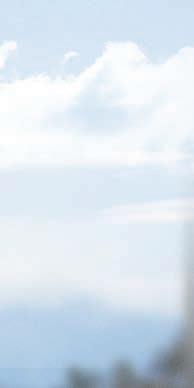



































The chronic staff shortage in the dairy industry has dropped from 4000 vacancies to around 2000-2500 as borders re-open in the postpandemic world.
DairyNZ people manager Jane Muir said it is pleasing because job market tension is getting close to pre-pandemic levels.
As of mid-June, around 600 jobs were being advertised on FarmSource, mostly for dairy assistant roles. The fall in payout is also seeing some farmers think more carefully about whether they can afford that staff member as they look to tighten their costs.
Farmers are also doing a much better job in trying to make job offers more attractive and feedback suggests they are getting more interest from people.
“Everyone needs to understand what ‘competitive’ looks like, that is the most important part and secondly we need to make sure people are supported to present what the job is in a way that is accurate,” Muir said.
She said there has definitely been an attitude change in the industry, with farmers far more willing to call out job ads on social media platforms when they are problematic and may cast dairying in a negative light.
“There’s a lot more pushback.”
There is also more anecdotal evidence of New Zealanders applying for jobs. Muir said the challenging economic times mean some are viewing dairying as an industry where there is stability.
Muir credits some of this change to DairyNZ’s Great Futures in Dairying plan,
which was launched in April and is designed to help the industry establish a more resilient long-term workforce plan.
It was outlined by No8HR’s Lee Astridge, who worked alongside DairyNZ to create the plan at its People Expos held across the country earlier this year.
DairyNZ has also created a job competitiveness calculator to help farmers understand what it will take to get their application to the employment start line. The tool went live on DairyNZ’s website on April 1.
It looks at the implications of recruiting people from the same pool as all of the other sectors who are experiencing staffing shortages.
“This isn’t about what it will take to get the best employee ever; it’s about what it’s going
to take to even be in the hunt against other sectors,” Astridge said.
The calculator asks employers what the terms of employment are in their job offer and helps the employer assess the competitiveness of the job offer by comparing it to similar jobs outside the dairy industry.
The results can guide the employer to make changes if required to make the job more competitive.
Astridge also surveyed people within the target market to see what could attract them to dairying. On top of the list was good hourly rates followed by consistent Monday-to-Friday work. Location and distance to travel to the job were not the barriers she had thought they might be.
The survey also asked
people how much an early start is worth in the dairy industry. Around 43% of those expected to be paid an extra $1000-$2000 for getting up early to milk cows, while 55% wanted $5000-$10,000.
Being a caring employer and offering career development opportunities are expected, especially the latter. It comes down to developing good individual relationships with people, Astridge said.
She pleaded for the dairy industry to do all it can to try to hold onto the staff it has.

It is going to take time. Dairy farmers will have to keep working hard on labour issues every year, elevating them to the same level of importance as animal health.
They have to, she said, “otherwise we don’t have businesses”.
For share farmers or contract milkers who employ staff, Astridge said farm owners have to realise that having adequate staff is not just a problem for the share farmer, it is a whole-farm problem.
“This is a real pinch point and it’s an industry issue.”
Astridge feared it could lead to some burning out and exiting the industry.
“Farm owners, please, these are business-to-business relationships and they have to work for everybody.”
It is not an impossible issue for the industry to overcome, she said.
There are plenty of farm owners in the industry who do not have staffing issues and have kept staff for three to 10 years.
“They are way past the start line. If they can do it, we can all do it.”


















 By Ross Nolly
By Ross Nolly
Winning the Fonterra 2023 Dairy Woman of the Year award came as a bit of shock for a Taranaki farmer who says she is “humbled” by the award.


Donna Cram owns a 107 effective hectare farm with husband Phillip at Awatuna, south Taranaki. They have recently leased 42ha to run their calves, heifers and dry cows and are planning to milk 290 cows. As well as dairy farming, Cram is often busy with various projects and in governance roles.
She is heavily involved in her community as the Taranaki Catchment Communities Inc chair and founder, is a DairyNZ dairy environment leader, a Taranaki Federated Farmers executive, a trustee of Dairy Trust Taranaki and a Taranaki Regional Councillor.
She was recognised by the judges as “an outstanding woman who has contributed to the dairy sector with passion, drive, innovation and leadership”.
“I was shocked to hear my
name announced because I’d talked myself out of it. I sat there like a stunned mullet; they probably wondered where I was. It was all a blur after that,” Cram says.
Winning was incredibly humbling for her and she’s been overwhelmed by the flood of message she has received – some from people she once worked with at Kiwi Dairies and hadn’t seen for 20 years.
“I’ve met many new people through winning this award. Hopefully, the award will enable me to pursue something that is important to me and the farming community. I really care about our rural communities and put everything into what I do.”
Cram received a Fonterra scholarship of up to $20,000 for an approved and personally chosen development programme, or a professional/business coaching and/or learning experience.

She’s still deciding what to do, but it will probably be in the leadership realm. She
would like it to be an overseas opportunity to allow her to look at big picture issues. It’s a very exciting opportunity, but she’s not sure when it’ll happen.
“The other women who were vying for the award were amazing, so I feel pretty lucky. I’ve been touched by so
many amazing people, many probably don’t know how much they’ve helped me,” she says.
“Starting an organisation like the Taranaki Catchment Communities from scratch was a major undertaking. Everyone who took on the leadership of the catchment
groups supported me, probably without realising just how much.”
Cram, whose initiation into governance began with playcentre and primary school boards, is very proud of the dairy industry she represents. She feels that the industry must enable more connections with the urban population so they can see exactly what happens on New Zealand’s farms.

“We talk about telling our story, but I’m not quite sure whether we’ve got it right yet,” she says.
Cram is conscious of being authentic in what she does. She aims to live her values, and strives to not lose sight of the outcomes she’s aiming to achieve. It’s not about who she rubs shoulders with, it’s about achieving the correct outcomes for her agricultural communities.
She continually questions her intentions and the reason she takes on projects. The day following her award she wrote down her aims so that she wouldn’t lose sight of the opportunity to make a difference for the industry.
“The awesome thing to come out of the award night was that dairy was celebrating. Two weeks later we celebrated the New Zealand Dairy Industry Awards. Both events celebrated the good food we produce, the great people in the industry, and the new people coming through. I
wish we could’ve had 10,000 farmers at those events.”
When Cram takes on a project or a governance role, it needs to involve an organisation, people and an outcome she feels passionate about.
Cram is a fourth-generation dairy farmer who grew up on her parents’ Taranaki dairy farms, before embarking on an accounting degree at Massey University.

She worked for the Audit Office in Palmerston North for two years before returning to south Taranaki to work as an accountant. She met her future husband, Phillip, who was from England and contracting in New Zealand. They travelled to the United Kingdom and stayed for 15 months. She worked in the auditing field.
They returned home to farm and spent two years lower order sharemilking 165 cows for her parents.
“We were never going to get anywhere with both of us on the farm, so I took on contract accounting work. I then began working at Kiwi Dairies prior to it becoming Fonterra, as a corporate accountant for two years before starting a family,” Cram says.
“When I was doing the contract work I’d milk in the mornings before driving to New Plymouth to work for the day. Looking back, it wasn’t ideal, but you do that when
NEW ZEALAND
YEARS
SHEDLINE® is a leading New Zealand brand in durable PVC dairy shed aprons and milking sleeves. SHEDLINE® is dedicated to providing the benchmark for personal hygiene protection in and around the milking shed.

you want to get ahead.”
Working your way to farm ownership is never an easy task, but they were never going to sit idly and wait for things to happen.
They leased a nearby 80ha farm and milked 140 cows for three years while Cram worked at Kiwi Dairies. They then leased the 77ha farm next to her parents for three years, milking 190 cows.
“We did all sorts to get a

farm. One year we raised 170 calves and during that period leased out heifers and bought and sold stock.
“In the second year of leasing this farm we took a 50:50 sharemilking job at Toko milking 150 cows and employed a great couple to run that farm. They’d been sharemilking and wanted some time out. We were lucky
Continued page 22
to have them.”
Between selling calves, cows and heifers, running their own farm and the Toko farm, it was a hectic period.
After starting their family, she began working two days a week at a local accountant.
They bought the Awatuna farm they were leasing in 2002, and also ran a mini digger business for three years. Philip operated that business while working the farm too, and she returned to the farm to work. The farm owners were very supportive of them purchasing the farm and Donna and Philip try to pay that forward wherever they can.
Seven years ago they sold the digger and bought the rear portion of Donna’s parent’s farm next door, to bring the size of their farm up to 117ha (107ha effective). They have recently leased 42ha to run their calves, heifers and dry cows and are planning to milk 290 cows.
“We worked the farm together, and during that period I also worked for DairyNZ’s dairy-based team
undertaking financial analysis and physical data collection. That flowed onto report interpretation for the farmers who were doing their mark and measure course.
“I met great people and helped them with their 10-year forecasting models and baseline reports before they went to mark and measure. I really enjoyed that experience.”
In 2021 she completed Agri
Woman’s Development Trust leadership and governance programme. She’s also a member of DairyNZ’s Farmer Group Dairy Environment Leaders and one of 14 farmer Climate Change Ambassadors, working towards supporting communities and embracing change within the dairy sector.

In 2016 their farm won the Taranaki Regional Council Award for environmental leadership in dairying and in 2021 it was a finalist in the Fonterra Responsible Dairy Awards.
She is intensely aware that the environment must be protected and improved to preserve the future of New Zealand’s dairying industry.
“We’d only just purchased the farm when the Taranaki Regional Council [TRC] land management officer encouraged us to buy plants. It wasn’t in the budget, but we began planting, and once you begin you just keep going.”
They fenced 9.6km of stream banks and installed four culverts to prevent their cows from damaging their waterway crossings. It’s a big commitment, but they know it’s a worthwhile one.
Three years ago they mentioned to the TRC land management officer that they’d like to continue their environmental work. The
officer talked to NIWA, which at the time was collaborating with DairyNZ to build six constructed wetlands and research their benefits.

A 4500m2 wetland, which amounts to around 2% of its catchment area, was constructed on the farm.
“It just so happened that our timing was right. They calculated out the catchment area and the best place to site the wetland. NIWA and the TRC measure many different parameters including the nitrate levels going into and exiting the wetland, and the turbidity. The TRC also check for E coli.”
When the TRC was beginning its local predatorfree initiative it told her that they could facilitate the process if she could get 90% of the local farmers involved. Thirty of the 32 farmers joined in.
That group became the Awatuna/Auroa Farming for the Future group, and is one of the Taranaki Catchment Communities.
Taranaki Catchment Communities came about after Cram attended the Dairy Environment Leaders Forum and discovered what environmental projects other communities were undertaking.
“Through Dairy Environment Leaders, I was
introduced to the AgriWomen’s Development Trust Escalator (Impact leadership accelerator) programme, which helped me start Taranaki Catchment Communities.
“Taranaki Catchment Communities is a response to new incoming regulations relating to freshwater and greenhouse gases. It also looks after the people, profit and planet. Many consider these regulations a threat; however I believe that we can farm in harmony with the environment.”
She enjoys having the ability to lead change, and create a vision to achieve that change. In her governance roles, she says, she is privileged to work alongside incredibly motivated, positive people.
“The people I work with are at the forefront of change and confident in their own farming businesses. It’s a different way


of looking at things, we’re always on the lookout for what’s new and different.
“My governance roles have given me confidence. Recently, I was told that five years ago I wouldn’t have said boo to a goose. Now I find myself being able to tell my story to influential people within the industry.”
Through the Escalator programme she discovered many like-minded people, which was a great enabler for her.
“There are 14 people in my Escalator cohort and when I messaged them that I was considering running for the TRC, they all replied that I should go for it.
“If they hadn’t encouraged me I may not have put myself up. It’s hugely important having that encouragement. Those people, and those in Federated Farmers and Taranaki Catchment

Communities, are like-minded, optimistic people.”
“I’ve got an amazing support person called my husband Phillip, and our




children Aleisha and James. Philip backs me all the time and I wouldn’t have done what I have if I didn’t have him encouraging me.” n

The newest member on the board of trustees of the Dairy Women’s Network loves to muck in and help others get the job done.
An affinity with the soil has led to several career paths for Canterbury’s Lucy Johnson, but they all have one thing in common: people.
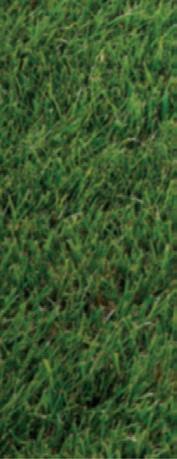
“Helping empower people to grow and innovate is where I feel I add the most value,” she says.
“It is about looking at how you can share your knowledge and build people up. People living on the land have their own passions – whether that’s cows or grass or whatever –and it is important to look at how to make an enduring farm business.”


Johnson, who is the most recent board trustee of the Dairy Women’s Network (DWN), grew up as one of five girls in North Canterbury on a sheep and beef farm. Her mum had a passion for horticulture, growing and



harvesting lavender, which was dried in the basement of the woolshed.
“We had the sweetestsmelling woolshed of all time,” Johnson says.
Her mum also established one of New Zealand’s first truffle orchards.
“For a lot of my childhood I remember international food writers visiting our place to sample the various ingredients we had on farm,” she says.
“We had a privileged childhood, being allowed to roam the land, and explore. We grew up in a picturesque part of the world.”
After finishing school –which she says was “not necessarily her favourite place” – Johnson headed overseas for a gap year. During that time, she found she had a strong appreciation for and interest in landscaping.
Returning home, she attended Lincoln University and completed a Bachelor in Environmental Management. She did work experience for a landscape architect but soon found out that “often the scope of landscaping was the

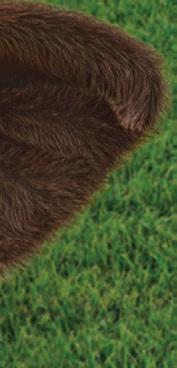







Canterbury’s Lucy Johnson is a board trustee of Dairy Women’s Network.
first thing to get squeezed when the budget gets constrained”.




“In reality, landscaping became a strong hobby and not a profession for me,” she says.


“So I chose to learn more

around geomorphology, which was the interaction of soil and water.”
After finishing university in 2003, she found a way to apply her learnings both in theory, and in life.
Johnson worked for Environment Canterbury for six years, starting in their customer centre and moving on to consenting, and then compliance out in the field.



She left the role, feeling some commercial experience would give her more rounded learning.
“I felt constrained within the bounds of the system,” she says.
“Prior to that, I had been building enduring relationships. Sometimes, it’s not the conversation you have, but how you have it.”
She moved to the Synlait Milk Group at the time of the Global Financial Crisis in 2009 and spent nine years there


looking after farm suppliers and working within the manufacturing plant.
“The business grew rapidly –there were 70 suppliers when I started and 220 suppliers when I left,” she says.
“I had some great mentors and leaders there.”
Within the company she moved to working solely with the farm team, in charge of all infrastructure and consents on Synlait Farms.

She went on to take a core role in rolling out the Lead with Pride initiative, a quality assurance programme for farmers – and the brainchild of Johnson herself, first conceptualised not long after starting with Synlait. In 2011 she completed the Kellogg Rural Leaders programme, looking into a range of quality systems operating within the primary sector.
Continued page 26
“The idea was to create a procedure to enhance environmental outcomes rather than true compliance,” she says.
“I thought it was just another ‘hare-brained’ Lucy idea but it had some real weight to it.”
After the birth of her first child, she “changed, as we all do”.
red meat companies and agri-related enterprises to help them develop projects, team build, coach, set goals, develop quality assurance programmes and support the implementation of Lead with Pride.
“I know that supporting people to consider the environmental aspects of their farming business will be critical in maintaining farm viability in the future.”
In the throes of covid-19 in mid-2020, she moved to a role at Amuri Irrigation. She found herself asking what else she could contribute to the primary industry.
When the role of DWN board trustee was advertised, Johnson was excited; it aligned with her passions and interests.
“The idea of helping people chunk down information into practical sense really appealed to me,” she says.
inspiring and enthusiastic people trying to improve and support the industry in a collective sense,” she says.
stakeholders. She brings her energy for agriculture, family and upskilling people to our organisation”.
“I went out on my own in 2018 and started an agribusiness and project management consultancy, working in my line of training,” she says.
“I worked alongside farming businesses, levy organisations,
“There are strong industry experts on the board, people from a variety of backgrounds, and I felt they could really inspire me.”
Johnson also liked the idea of giving something back to the industry, while learning more about it.
“It is great to be around
“I am excited to embark on my formal governance journey with DWN.”
DWN Trust board chair Trish Rankin says: “Lucy has extensive policy and regulatory knowledge which will enhance our understanding of the opportunities and challenges faced by DWN members and

Johnson has two children, a boy and a girl, and she has tried to instil a sense of “togetherness” in them.

“I try to teach them that all they have is each other,” she says.
Currently living in Christchurch, Johnson says one day she would love to get back onto the land.
“I know that supporting people to consider the environmental aspects of their farming business will be critical in maintaining farm viability in the future.”
Lucy JohnsonLucy Johnson grew up rurally and has an affinity for the
land and its animals and she has instilled that love in her children.Synlait’s Lead with Pride initiative, a quality assurance programme for farmers, is the brainchild of Lucy Johnson, who also helped to implement it.
“But in the meantime, it is great to have that rural connection through my network,” she says.
“We often visit family living rurally and try and teach the kids where food comes from and about living on the land in general.”
These days she predominantly works for Amuri Irrigation, while doing a little bit of seasonal consultancy work.
She says examining capability is quite a passion point for her.
“I’d like to explore keeping productivity strong by creating standardised and repeatable processes,” Johnson says. “I believe that ensuring positive and practical solutions are gained through a continual focus, and embedding lean principles to the way we work, will ultimately enhance
productivity. There is such a loss of productivity – from food waste to a waste of thinking and energy.
“We need to look at a different way of streamlining the processes we have to keep progressing as an industry, to embrace the variability that will continue. After all, we’re dealing with a biological system.”
She says we also need to encourage people into the primary industries.
“We need to introduce a raft of strategies to make the primary sector appealing, to attract and retain great talent,” she says.
“We need to work alongside young people to show them how wide the primary sector actually is. They don’t have to go farming – they could be rural bankers, or sell seed, or work in agri-tech – a huge growth area.

“They need to understand that within the primary sector lie a neat set of people. Farms are medium to large businesses now; and what’s better, you can see the results of your work.”
www.graincorpfeeds.co.nz

While Lucy Johnson currently lives in Christchurch, she and her children often visit family living rurally and teach the kids where food comes from and about living on the land in general.

n
“We need to look at a different way of streamlining the processes we have to keep progressing as an industry, to embrace the variability that will continue. After all, we’re dealing with a biological system.”
Lucy Johnson
New Zealand’s milk is not the only animal product that has the attention of the global market: now, thanks to a new purpose-built filtration facility, the spotlight is on its high-value animal serum as well.
NZ life sciences company Auckland BioSciences Ltd (ABS) has recently completed construction of an animal serum filtration facility in Auckland, the newest largescale sterile cleanroom of its kind in NZ.
The new filtration facility complements an existing facility in Rutherford, New South Wales, and ABS’s Christchurch site. Together, they produce filtered animal sera of different species, transforming animal waste into highvalue pharmaceutical grade product used internationally in the production of vaccines, therapeutics and pharmaceuticals.
Thanks to the new filtration facility, the company can now produce sterile sera in NZ to bespoke specifications with
the ability to scale production both in product type and volume. The added complexity involved in filtering means the end product is significantly more valuable than the same product in raw form.
Auckland BioSciences group general manager Daniel Maxwell says animal serum from NZ and Australia has an intrinsic premium in the global market due to the region’s world-class animal traceability systems, animal health management and freedom from major animal diseases.
“The disease-free nature of the herd means that the serum is the most preferred in the world and can be priced as high as 400% above serum from other parts of the world,” he says.
“Our ability to produce both higher-value raw and sterile serum means we’re able to supply a wider range of products to additional customers in more countries around the globe, including the lucrative United States market.
“This year, ABS expects to commence supply to major global vaccine manufacturers.”

ABS’s NZ business alone processes over 2 million litres of raw material per annum. These materials would otherwise become waste or be made into lower-value products.
Its NZ-origin, ready-touse serum will also benefit customers who do not have their own sterile filtration capabilities.
ABS is able to export its sterile filtered product to countries where sera must be sterile prior to importation.
It exports to 18 countries and some of the world’s largest markets, including the European Union, the US, Japan, Australia, Brazil, India and China.
ABS has recently achieved a milestone of delivering serum that meets human-use criteria, accomplished in part due to the company’s ability to sterile filter all its sera, a critical step in making it ready for pharmaceutical applications.

In 2021, Auckland Biosciences acquired CellSera Australia, a New South Walesbased company specialising in the production of animal sera, and in 2022 it was named winner of the Deloitte Master of Growth Index, placed 21st on the 2022 Deloitte Fast 50 Index, and was recognised as the Fastest Growing Manufacturing Business in the Auckland and Upper North Island category.
“As a start-up that operated out of a shipping container office less than a decade ago, we are incredibly humbled to have since become a leading exporter of serum products,” Maxwell says. n
Te Kunenga ki Pūrehuroa Massey University pilot study indicates that combining solar panels with a pastoral sheep farming system could have both positive and negative impacts on pasture growth.
The researchers’ preliminary results from the first seven months of study indicate that these effects are dependent on where the panels are located. Pasture growth was reduced by 84% directly under the panels, but increased by 38% in the larger areas between panels. Pasture growth in both cases was compared to pasture growth in areas away from the panels.
Professor Danny Donaghy from the School of Agriculture and Environment, who co-led the study, says that direct shading under the panels likely has a negative influence on pasture growth, unlike some previous international research in generally hotter and drier climates.
In contrast, in the area between the solar panels, the panels might offer some “protective” effects, possibly by keeping soil temperatures cooler and also slowing down loss of soil moisture due to wind, compared to an open paddock.
“These results could be used to inform the design of future mixed solar and pastoral farms


in New Zealand, including ideal height from the ground and spacing between the rows of installed panels. This would be a win-win for solar farming co-existing with pastoral systems, or even horticultural crops,” Donaghy says.
Head of the School of Agriculture and Environment Professor Paul Kenyon, who is the other co-lead of the study, is pleased that there is New Zealand-based research to support farmers.
“We are really just starting to understand the potential impact of solar panels on pastures in our milder and wetter New Zealand climate. The next steps are to collect more data, from across
New Zealand, in differing environments.
“It is important to get accurate data for New Zealand conditions. Data is needed over the entire year, or ideally over multiple years and sites, before firm conclusions can be drawn. This pilot project will continue until spring 2023, with additional details collected on pasture growth and quality and the prevalence of facial eczema spores on pasture. We will also conduct an economic analysis of the system with our partners at Lincoln,” Kenyon says.
Pasture performance was measured from July 2022 to January 2023.

How you react to challenges has a huge impact on how well you manage the ups and downs of farming, says Taranaki dairy farmer Kane Brisco, author of top-selling book Tools for the Top Paddock. Farmstrong asked him to share his tips for staying calm under pressure.

It’s been a challenging year for many farmers. How do you navigate tough times?
Asking for help and advice is a big one. I think one of the things farmers struggle with sometimes is asking for help or seeking out knowledge to help them get through tough times. It’s because that Kiwi ‘No 8 wire’ mentality is so deeply ingrained in our mindset and how we approach farming.
But if we really want to be more resilient and tougher and better, we need to start using different tools and different skills, and a big part of being resilient is using the people around you when the going gets tough. Bringing in their knowledge and skills is a huge way to develop your own resilience.
One of the things I do now is that after I’ve been through a challenge on farm, I go back and make sure I take the lessons out of it. I take some time to reflect and learn from it.
That way it feels like you’re doing something proactive, because in farming you know there’s always going to be another challenge coming.
How do you manage the day-to-day pressures and workload on farm?
The biggest thing I do is put pen to paper, so I’m getting what’s whirring round my head out onto a piece of paper. It can be as simple as listing out your jobs for tomorrow or brainstorming and problem-solving something that’s causing you stress.
It’s about getting those
thoughts out of your head and onto paper so you can actually deal with facts. You’re much less likely to lose sleep over things when they are listed out as facts in front of you like that. It stops you getting too negative.
The other big thing is having a pressure release valve. For me, sport and exercise are huge. Getting off farm as often as I can, getting out and doing something, whether it’s coffee with a mate or a beer down the pub or playing a game of squash. Just taking that mental rest off farm is huge.
for me to put a full stop on a problem or stuff-up. Let’s face it, when you’ve had a bad day it’s usually about something you’ve stuffed up. It’s a lot easier to put a full stop on it when you’ve got good perspective.
When life gets busy on farm it’s easy to neglect the basics of keeping well. What’s your take on that?
If you ask a farmer what’s the most important tool you’ve got, a lot of people would say the animals or the milkshed or the tractor or the working dogs, but how good are those without you? I reckon it’s that bloody simple. You are the biggest cog in the machine and if you can look after that cog, oil it and grease it properly and pay it some love, then everything else around it is going to be working so much better.
For me, your own wellbeing on farm is absolutely fundamental and has to be a priority. You’ve got to be in the tight space physically and mentally to farm well.
How do you deal with a bad day?
When I’m having a bad day I have a perspective check. I’ve got a few experiences that I relate back to and give myself a comparison.
One of those is thinking about my nana when she was farming. She left school when she was 13 back around 1940 and I just think about what life would’ve been like for her on farm and that my problem, in the grand scheme of things, probably isn’t that bad!

That’s a really good way
Physical and mental fitness is hugely important on farm and it’s all driven by physical actions – what you eat, what you drink, your movement throughout the day and even the people you hang out with – they’re all physical things that feed into that mental wellness.
What about when it all turns to custard? Any advice for navigating really challenging times?
I think it’s important to control the controllable. It’s a huge amount of extra stress to take on if you’re worrying
Under the pump?
For tips and ideas, visit farmstrong.co.nz
about the things you can’t control or have no influence over. So prioritise the things you can control and influence.
I’m a massive fan of listing out all the things that need to be done and then prioritising those so you have a plan about what you attack first. It’s a bit like eating an elephant, it can feel overwhelming if you look at the elephant, but if you break down the task ahead into legs, tail and body it becomes something much more achievable.
I think it’s important for people in bad situations to break down the work into achievable amounts so they’re not overwhelmed by the scale of everything.
How do you make sure you’re in the right headspace to make good decisions on farm?
I think a lot of it comes down to your mindset – it’s all about that survive versus thrive mindset. You know, when you get stuck in the survive mindset you feel as if everything just happens to you and life passes you by. You feel as if you’re just there on farm and trying to survive each day. It’s not a very positive place to be.
But I’ve learnt that there’s always something you can do to help you thrive where you have a purpose, a plan and a process to start creating your life going forwards, rather than just letting it happen to you.
I admit, it can be a hard thing to do when you’re in that survival mindset, but there’s always something you can do that will make tomorrow better for you. It’s
really important to try and be aware of that and understand that.
I’ve also learnt it’s really important for me to have balance in my life and work on the business and not just on the farm. Taking time out of my week to sit down and problem-solve in a good, positive headspace has been really crucial to making good decisions.
What does being Farmstrong mean to you?
It’s about dealing with the full picture. Not just concentrating on being a good farmer, but being a great person off farm as well. I reckon they’re both intertwined. Being a good, well-rounded person generally leads to being a great farmer on farm.

Why are you involved in Farmstrong?
I like Farmstrong because I share the same mindset about being proactive about my mental and physical health. I think being proactive rather than reactive is hugely important to being a successful farmer. I think Farmstrong’s resources and knowledge and how they’re formatted is really easy to understand. I also think they’ve got a great set-up to really help farmers on a massive scale. To me that’s super cool and that’s what I like to get behind.
MORE:
To find out what else could work for you and your team, head to www.farmstrong.co.nz for free farmer-to-farmer wellbeing tools and resources.

“After I’ve been through a challenge on farm, I go back and make sure I take the lessons out of it. I take some time to reflect and learn from it.”
 By Samantha Tennent
By Samantha Tennent
A Whanganui farmer has found her place in agriculture on a dairy farm and couldn’t be happier.
The buzz from tending to hives and harvesting honey eventually wore off for Georgia Young, who decided it was time to get on with her studies. Throwing in her beekeeping job, she headed to Massey University in Palmerston North.
But she struggled to find a new buzz at university and decided to drop out after her first year to pursue something else. She landed a dairy farming job in South Taranaki, despite swearing from a young age that she would never set foot on a dairy farm.

“I grew up on a family sheep and beef farm and all I really knew was dairy farmers get up early and seem never to stop,” Young says.
“But I’ve got a newfound appreciation, there’s so much dairy farmers are doing behind the scenes, for their animals and the environment. It’s so much more technical than it seems.”
Her journey began on the family farm in the Paraparas
just north of Whanganui and her uncle and godfather, Michael Lumsden, was a beekeeper and kept some hives on their farm. Young spent the summer after Year 13 in Hamilton helping Lumsden with his bees and he suggested she study apiculture. So she did a course through UCOL in 2018 and was approached by a beekeeper close to home with an assistant beekeeper job.
“It was just the two of us to start with, which was a lot of work,” Young says.
“But I also lost my grandmother unexpectedly that year, so the bees were a good escape and a way to stay close to home to spend more time with my grandfather.”
After two seasons the work had expanded so much her boss took on more team members and Young stepped into a training role, teaching the newbies how to tend to the bees.
But she had had university on her mind for a while
and after four years as a beekeeper, she finally decided to make the move to Palmerston North. She enrolled in agribusiness with a major in rural management and a minor in rural valuation.
“I was thinking I’d end up a farm adviser or a rural banker
maybe, but I didn’t really know what exactly, so I started heading in that direction.
“I couldn’t get chemistry, though, which meant I needed to reconsider my major and minor, and I found I didn’t have the same motivation anymore, so I
began questioning if it was worth it if I wasn’t putting my all into it.”
It was a bold move but she is pleased she made the decision to step away. It was while she was job hunting that a girl she had met through university approached her about a role on a dairy farm.
“It was for her parents, they wanted someone with dairy experience but gave me an interview anyway because I at least had stock sense coming from a farm background.”
The farm owners were Kate and Gerald Lynch, who her dad, Trevor Young, knew through his time in Young Farmers. They offered her the role and she moved from Palmerston North to Maxwell, on the other side
of Whanganui, ready to start June 1 last year.

It is a spring calving farm and they milk 580 Friesian cows through a 50 bail rotary. Calving was due to start on July 25 but they had some calve on July 9 and it was a whirlwind from there.
“I knew calving was going to be tough and it well and truly tested me. It really was an eyeopener to drop myself in.
“I’m very lucky to be working for Gerald though, he has a wealth of knowledge and if I ask the right questions he gives me thorough explanations about why he does things.”
Part way through the season she got involved with pasture management and has found it fascinating learning about things like the impact body condition can have on reproductive performance.

There are four in the team and from working alongside others who are also fresh into the industry, she appreciates how having simple stockmanship skills can make a huge difference. She has been studying Level 4 Agriculture through Land Based Training, which has really helped develop her understanding.
Like her dad before her, she is involved in New Zealand Young Farmers and enjoys the networks and opportunities it helps her build.
She has been off work recently recovering from surgery on an old injury but
is looking forward to getting back outside. Her advice to others new to the industry is to immerse themselves in everything that is going on but remember to take a break.
“I’ve been lucky we run a five on, two off roster. It makes a huge difference knowing the recovery days are close because I can see how easy it is to wear yourself out too early through those busy times.
“It’s true when they say you can’t pour from an empty cup!”
She still has a few hives floating around just as a hobby, but does not think she would go beekeeping commercially again and has certainly found her buzz on the dairy farm. n

While most dairy farmers are heading into spring calving with lush grass cover, cows may need more starch and energy to compensate for pasture deficiencies this season.

Unusually high rainfall and warmer temperatures across the country this autumn have resulted in exceptional grass cover for many areas. However, SealesWinslow nutrition and quality manager Paul Drew says pasture testing carried out by the company shows there could be nutritional deficits in pasture this season that need to be addressed.

“While pasture may look good, it may not give cows the energy they need to set them up for calving. Some of our farmer customers dried off early because they couldn’t sustain production as well as meet body condition score targets for next season.”
While grass will always be king, he says, there are times when the cow’s unique nutritional needs cannot be met by pasture alone.
“Best practice is to make sure body condition score targets for calving are met at dry-off. Given the poor pasture quality on some farms, it has been difficult to achieve those targets on pasture alone.
Most farmers have needed a supplement to make sure cows have enough energy and starch to keep the rumen working and better utilise the pasture available.
“If farmers do find themselves in the unfortunate position of not having met body condition scores at dryoff, it’s essential they prepare the cow for her following lactation by optimising body condition now. This is more difficult to do during the dry period. But complimenting pasture and available farm feeds with a good amount of starch and energy can help.”
Drew says a lot of farmers still think they can feed 2kg per cow per day of palm kernel and they will be fine. But they need to consider how best to fire up a cow’s rumen and get it working efficiently.
“It’s not just about gut fill. A balanced approach to starch, fibre, energy and protein will optimise rumen performance and provide the best value from the cow’s entire feed ration, including grass.”
He says how farmers feed their cows heading into calving can have the single biggest impact on farm profitability, not just this season but next.
“It has a flow-on effect. If you’re not keeping up the energy levels of your herd at
this time of year and meeting those body condition scores, you will be constantly playing catch-up.
“Achieving body condition targets is key to driving production and reproduction performance during the following season, so it’s important to get nutrition right. Focusing on nutrition just prior to calving in the ‘close-up’ transition period is key to reducing metabolic disease at calving and giving the cow the best possible start to the next lactation cycle.
“This is a difficult time to ensure the cow is consuming enough energy and protein for her and her growing calf. It is just as important to have a strategy to promote calcium mobilisation post calving to avoid the likes of milk fever.” Drew encourages dairy farmers to make informed nutritional decisions to give them confidence they are meeting the nutritional needs of their herd between now and calving. He recommends getting expert nutrition advice to make sure they have the right solutions to complement feeds available on farm.
“As herd nutrition has become more precise in recent years, many farmers have seen first-hand the benefits of taking a more scientific approach to feeding
their cows. This makes sense now more than ever,” he says.
“With production costs at an all-time high, farmers need to see a return on their feed investment. It’s not just about grabbing ingredients, blending them, and feeding cows for the sake of it. Farmers need to think more technically about the return on the investment they’re getting when they buy feed.”
He says if cows are converting feed into milk in the most efficient way, they also emit less methane and nitrogen, something that should be on every farmer’s radar right now.
“It’s complex and scientific, but this is the approach to nutrition we need to help farmers take, especially as they look for ways to start reducing their on-farm emissions and satisfy dairy company and global customer requirements.” n
Farmersneed to make informed nutritional decisions to ensure they are meeting the needs of their herd between now and calving.
With calving almost underway,
dairy farmers are being urged to be vigilant for coccidiosis by planning their calf feeding regimes and using nutrition to combat the potentially fatal disease.
Coccidiosis can attack calves from four weeks old, causing scours, and can result in death. The disease is prevalent throughout New Zealand, and thrives in warm, moist conditions. It often surfaces during periods of stress, like moving or regrouping calves or when calves face reduced immunity.
SealesWinslow nutrition and quality manager Paul Drew says while no vaccine
is available for the coccidia parasite that causes the disease, a good nutrition plan can help prevent it and improve calf growth rates.
“Any farmer who has had coccidiosis knows it’s a disease that needs to be avoided,” Drew says.

“A big part of prevention comes down to using a calf feeding programme that includes a coccidiostat fed at the correct daily dose. To reduce the risk, it’s important to keep feeding a meal with coccidiostat until calves have built up their own immunity.”

Maintaining good gut health by encouraging beneficial bacterial development in the calf’s gut through feeding prebiotics



and phytobiotics is also important to minimise gut health challenges and reduce scouring, says Drew.
“Calf-rearers should be aiming to get calves onto a good calf feed containing prebiotics and phytobiotics as early as possible to develop good rumen function and gut health.”
Phytobiotics are compounds from herbs and spices. Their extracts help stimulate appetite and offer antimicrobial properties. A good feeding plan that graduates calves onto calf muesli or pellets as soon as possible not only helps fully develop a calf’s rumen, but it also improves digestion and feed efficiency.
“The faster we can develop that rumen, the faster we can get the calf consuming more and fully utilising solid feeds, improving digestion and its daily weight gain,” says Drew. “This is crucial to meet body weight targets and to the calf’s future productivity.”
Drew explains that using a compound feed like calf pellets with effective starch levels helps fire up the calf’s rumen and drive the development of its absorptive area, improving nutrient utilisation.
“Pellets ensure consistency in every bite, meaning there’s no chance additives or minerals are lost at the bottom as in the case of a loose blend,” he says.

The heifers due to come into the herd this season were given extra special care at birth to ensure wellgrown and healthy animals.
No aspect of the operation is too small to concern a south Waikato farming couple whose calves grow well and thrive.
Attention to detail is the backbone of Amanda and Dean Benson’s thriving calf-rearing system. With every meticulous step, they ensure the health and welfare of their animals, and it is this philosophy that has ensured their success.
Investing time and effort in raising healthy calves is not just a principle, but a way of life as they strive for healthy animals that reach their full potential.
The Bensons and their team member Hannah Jackson are into their third season on their 120ha farm in Okoroire, south Waikato. They milk 253 Jersey-cross cows on once-aday all season and, with their purpose-built calf-rearing

shed, run a slick system.
“It does take time to pay attention to detail but so do sick calves,” Amanda says.
“We try to stack everything in favour of those babies so they get the best start and one big focus is keeping everything clean.”
Through the calving period, they milk in the afternoons and switch to morning milking when most have calved. Calves are usually collected once a day in the morning and every new calf is weighed and the information is entered into MINDA.
Navels are sprayed up to seven times over the first couple of days – any time they are moved or handled – and all of the calves are bottle-fed on their first day.
“During the first feed we try to listen to what the calves are telling us, like if they’re hungry
but scared or if they’re full from mum,” Amanda says.
“We will only stomach tube if they are too weak to suckle but that doesn’t happen often. If the weather looks bad we will bring them back anyway so they aren’t out in it.”
Every freshly calved cow is milked into a test bucket and her colostrum is tested with a Brix refractometer. All of the colostrum is graded and only the very best will be given to the newest calves.
The milk is warmed to around 26-28degC and Benson checks it by testing with her finger.
They offer three feeds of two litres on that first day, then they go onto two feeds of 2.5L per day. The animals always have access to water and calf
“Before things get busy, the early calves are spoiled and are given warm milk and once it picks up they get warm milk for the first two days then transition to cold by starting with warm and adding cold as they’re drinking.”
Amanda Benson
muesli, Fibre Gain and Opti Guard.
“Before things get busy, the early calves are spoiled and are given warm milk and once it picks up they get warm milk for the first two days then transition to cold by starting with warm and adding cold as they’re drinking.
“Then the next day, it’s the opposite, they start cold and it’s topped up with warm so they learn to keep suckling.
“Every transition we focus on making it easy and slow.”
The calves are grouped by age, not breed or weight, and the pens move according to the youngest animal in the mob.
“We don’t separate them by size because being a productive dairy cow is a competitive life.
“We make sure they all have the same opportunity to drink milk and have access to feed so they have the best chance.
“There are heaps of feed troughs. If they all wanted to eat at the same time they could.”
If the weather permits they have access to outside pens, and there are canvas curtains that can be pulled closed to keep them warm and protected from the weather. The curtains are recycled truck curtains sourced cheaply from Tauranga Canvas.


“The curtains make a massive difference. It can be
cold and we’re all rugged up outside but you notice the difference as soon as you go inside when they’re closed, and they have a gap at the top between the rail and the roof for ventilation too.”
At around two or three weeks, the calves are disbudded by the vet with a local and general anaesthetic. Any extra teats are removed, beef bulls ringed and they are all vaccinated. Then they begin their transition to a mobile feeder in the outside pen and are fed 5.5L per calf
per day in one feed. The Bensons emphasise hygiene and biosecurity throughout the entire process and only farm staff are allowed in the calf shed. The bedding is replaced every year and the pens are water blasted and disinfected. The milk lines and all of the feeders are washed and scrubbed after every feed and the water troughs are emptied and cleaned twice a day. They even pick up calf faeces from the wood chip in the shed.
“We keep the feed and
water fresh and we don’t overstock troughs because they won’t eat it once other calves have licked it and slobbered on it, or the birds have been in it.
“The same level of cleaning in the milking shed should be used for the calf milk equipment.”
Any treatments are recorded in MINDA but there is no sick pen as they haven’t needed one for seven years. They are quick to use pain relief if they feel the calf needs it.
Weaning takes place slowly between six and 10 weeks by monitoring meal intake, growth and physical signs of rumen development. Their average pre-weaning weight is 82kg and they hit 100kg at around 12 weeks. They continue feeding pellets and Fibre Gain until Christmas and use about 3t of calf pellets and 10t of Fibre Gain through the season.
“It’s a thorough process but we know it’s worth it. The calves are calm and settled and they don’t bellow or try to follow us out of the shed, and it’s rewarding not dealing with sick animals.”
Chat to our team to see if Ancalf™ is right for you or visit nzagbiz.co.nz for more answers to your calf rearing questions.






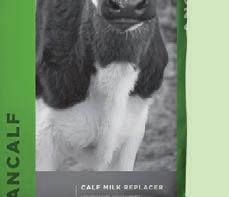





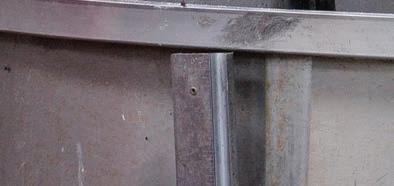




For Pukeatua dairy farmers Dana and Brett Smith, who are onto their second season of using calf milk replacer, feeding Ancalf has become a “no-brainer”.


The Smiths run 650 KiwiCross on their farm near the Arapuni stretch of the Waikato River. They made the decision to switch from feeding vat milk to Ancalf based on financial returns, and have been delighted with the ease and calf health outcomes of making the change.
“We always used milk from the vat, but it was a bit of a no-brainer once we went to autumn calving,” Dana says.
“Obviously anything that goes into the vat is beneficial
for us – it just makes sense as a business to do this right from the get-go, so we know exactly how much milk is going to the vat and that we’re getting the best premium for it because that’s obviously more into our pockets.
“We used to split-calve, so going into autumn using Ancalf we could keep as much milk in the vat as possible, which is what we needed to get that winter milk contract. We then carried it through into springtime and it just seemed to work amazingly – the calves love it, so we’ve stuck to it.”
With a range of calf milk replacer (CMR) products on the market, farmers rely on advice and recommendations to make the right decision
for the future of their herd. Ancalf, being a casein-rich CMR, closely aligns with the composition of natural whole milk.
The Smiths say they are seeing the health benefits of carefully selecting the right CMR.
“We spoke to other people that used Ancalf and it seemed to be the most popular one that everyone really loved. So we thought we’d give it a go and we haven’t changed because it has been amazing. We haven’t had sick calves, we haven’t had any problems with the changeover from the colostrum straight onto the Ancalf – it just seemed to work,” Dana says.
It has a good reputation with farmers and rearers who are serious about their calves’ development.
“It’s the consistency for the calves – it’s a no-brainer really, just to make sure they’re getting the nutrients they need and everything. I would recommend it.”
“We always used milk from the vat, but it was a bit of a no-brainer once we went to autumn calving.”
Dana SmithBrett and Dana Smith farm at Pukeatua and have found feeding their calves a milk replacer good for their health.
The busy calving period is a time when farmers often suffer from strains and sprains but DairyNZ and ACC are working on innovations to help minimise these.
DairyNZ senior scientist

It’s been great to be able to get out and about more this year, connecting inperson again with farmers at events.
We have been talking about a range of topics, and there has been a focus on keeping our staff safe and well by reducing injuries over calving.
Research has shown that sprains and strains make up around 40% of all dairy farm injuries, particularly between August and October during spring calving.
These mainly occur when farmers are:
Collecting calves from the paddock
• Lifting/feeding calves or buckets of milk
Cupping cows, particularly on rotaries
• Slipping or tripping on uneven ground or pipes/ hoses
With this focus around on-farm safety, DairyNZ has partnered with ACC through the ACC Workplace Injury Prevention Grants. Through this we are designing and developing creative solutions with farmers that support a sector-wide reduction in sprains and strains, particularly over calving. We know this time of year
is busy enough, without additional injury to yourself or someone on your team.

DairyNZ is passionate about ensuring solutions, which not only sound good on paper but help and are practical to implement in real life. That’s why we co-design innovative farm safety solutions with farmers, to understand how to improve safety during day-today calving activities.
Farmers are part of the initial designs, and they test all concepts on farm to further refine the solutions, determine if they are practical and help solve the problems identified.
It’s been exciting sharing these prototypes with farmers at recent events. This included showcasing them at the Innovation Hub at Fieldays, which provided a great opportunity for farmers to come and see the concepts in person.
One entry was our easyentry calf trailer, with a spring-loaded and self-closing saloon door. This enables easier, faster and safer calf loading, to reduce injuries associated with collecting calves.

Other concepts include a calf-rearing area pedestrian gate, flexible breast rail, new milking cluster design, cups on mat design and a bucket lifting trolley.
with DairyNZWhile we continue working on trialling and improving our concepts, I still encourage you to focus on the physical and mental wellbeing of yourselves and your team over calving.
Here are a few top tips from farmers that can help reduce injury during calving season:
Have two staff pick up heavier calves together if needed
• Use a specialised trailer to transport calves
Pipe milk into calf feeders instead of lifting buckets
• Tuck hoses away after use in the milking shed
Invest in the right footwear
– look for great grip and ankle support

You can find more information and videos on the project and concepts online at dairynz. co.nz/sprains-strains.
“DairyNZ is passionate about ensuring solutions, which not only sound good on paper but help and are practical to implement in real life. ”
Now’s a great time to review the calf transport rules and check that your shelter and loading facilities are clean and well maintained.
Calves less than 14 days old, that are leaving the farm for sale or to go to the meat processor, must be fit for transport and meet these requirements.
Calves must:
1. be at least four full days old (96 hours)
2. have a dry, shrivelled navel
3. have firm, worn hooves
4. be able to stand up, walk and bear weight evenly on all four limbs
5. be able to protect themselves from being trampled or injured by other calves
6. be free from injury and birth defects (e.g. blindness, contracted tendons) that would mean they cannot withstand the journey
7. be free from scours or other signs of disease that would mean they cannot withstand the journey
Calves should be well-fed with bright eyes and ears up.
Calves must have suitable shelter at all stages of their journey – before loading, during transport, and at their destination.
Loading facilities may take any form - a ramp, a raised platform, a tractor tray - provided they meet the criteria in the regulations.
Loading facilities must:
1. allow calves to walk on and off stock transport vehicles
2. minimise the risk of a calf injuring itself, becoming distressed, slipping, or falling off



Learn more about the calf regulations at mpi.govt.nz/animalregs

If in doubt, leave it out.
Abold switch saw Dunsandel farmer Gary Michael ditch crop and sheep farming to take on the dairying challenge 10 years ago. It was rocky in the beginning but he has well and truly hit his stride and made incredible gains in the health and performance of his herd.
“I got into dairy for the challenge. I like the fact you get feedback every day from milk so you can measure where you’re at, whereas with cropping you don’t really know till you put the harvester over it,” Michael says.
“But the early years were a battle. I thought I knew how to grow grass coming from cropping but I wasn’t feeding the cows to their potential and struggled.”
He connected with a farm adviser who emphasised the importance of herd nutrition and it changed everything.

“Once I understood how to feed them properly everything changed. We got better in-calf rates and better production, and ultimately it comes down to animal health because happy, healthy cows produce milk.
“I’ve never seen a cow with animal health issues that still produces well and gets in calf.”
He is milking 680 cows on 174 effective hectares and the focus is paying off, seeing well over 600 kilograms of milksolids per cow.
“Making sure they’re full is important. We check them all the time and if we’ve got it wrong we just give them more.”
They feed 24kg per day consisting of 18 to 19kg of grass topped up with a barley and palm kernel mix. He
mows in front of the cows and catches up monthly with his adviser, Peter Vermaak from Dairy Nutrition and Management Solutions.
“When Peter comes out he body-condition scores the cows and looks at a lot of different things, like the effluent, cud chews, milk production and what they’re eating to make sure they’re getting fed the right amount of feed for what they should be producing so they’re not stripping condition.”
Dairy Nutrition and Management Solutions focuses on improving efficiency and profitability in pasture-based systems. Michael appreciates that they discuss the actual performance of the animals, not just the budget, and that
supplementary feed is only utilised when it is actually required.
And a game changer has been implementing a DCAD diet.
“Peter got us onto a DCAD diet a few years ago, which is when we had the massive change in improving animal health and production, but following the plan is really important because we’re feeding calcium before they calve and we’ve got to be careful to get the diet right or they’ll tip over.”
Two weeks before calving they feed some ionic salts to get their systems primed and they feed calcium the whole way through. He has found the production curve is flatter and holds for a lot longer with better feeding.
“I like the fact you get feedback every day from milk so you can measure where you’re at, whereas with cropping you don’t really know till you put the harvester over it.”
Gary Michael
“We use Vitalise pellets from CP Lime and the cows get all their calcium, magnesium and trace elements in there.





“We used to put it all through the water but the cows didn’t like it but now they’re getting them in the pellets in the shed and drinking more water, which I think is helping too.”
He has seen a big reduction in down cows, with only a few cows having problems in the past few seasons.
The pellets also mean there is no need to dust the paddocks.
“With the pellets, we know what they’re getting every day in the shed, it’s reliable and we know it works well.”
In addition to reducing the incidence of down cows, he has also worked hard to reduce lameness in the herd. About five years ago there was a serious problem but by monitoring proactively and
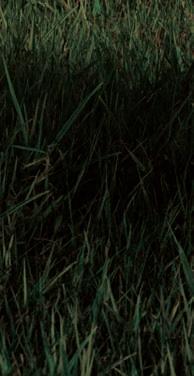




utilising locomotion scoring to pick up cows early, he has been able to reduce the issue.
He supplies Synlait and has achieved Gold Elite in the Lead
with Pride programme, which he says has been a good driver.
“We were doing a lot of the things anyway, but the
programme did help us be a bit more proactive and focus on some of the key things to help improve our herd health and it’s a bonus to be financially rewarded as well.
And it is all paying off with a high six-week in-calf rate of 72%.
With the wellbeing of his herd in mind and analysing the economics, as well as being conscious of reducing their environmental impact, he has built wintering barns this year. The aim is to have the most efficient cows possible.
But ultimately no matter what the system is, he has the evidence that the key is feeding the cows right.
“Well-fed cows are the key, they need to be fed to get to their potential and to be healthy and we’re doing that by utilising our pasture as much as possible and topping up when needed.” n
It is not uncommon for vets to tell us that some of their farmers are reluctant to have a tail score performed on their herd. It is a sensitive subject, probably driven by the number of prosecutions that have occurred in recent years.
But scoring a herd doesn’t imply there is a problem, it is simply a monitoring tool, like herd testing or BVD bulk milk monitoring.
An annual tail score is carried out to monitor tail damage. It is important to track changes and identify how and why any new tail damage occurs, if it occurs at all.
Tail damage is a little different to the other metrics we monitor with WelFarm, as most are directly linked to productivity, but tail damage is primarily an animal welfare issue. And with farming under such an intense magnifying glass, there are many reasons for having assurances in place to monitor welfare and understand what is happening with the herd.
To carry out a tail score, a trained vet or tech will visually inspect every tail, as well as touch them to assess any damage. They will make note of any abnormalities, classifying the damage as deviated, shortened or as a trauma or swelling. It is a quick job and for a rotary they are typically carried out during milking. For herringbones they may get you to run them in the AB race afterwards.
After the whole herd has been scored, they will collate
the results and if you’re using WelFarm they will enter them into the portal where you can see the benchmarks, which compare your results to other farms in the region and across New Zealand.
The first time a herd is scored they are taking a baseline, creating the benchmark for the farm itself, and every score after that can
and assessment of what might have changed. If after a tail score you have any concerns about the results, your vet can help you put a plan in place to reduce any damage or injuries that may be occurring, whether they be from the infrastructure or any handling techniques. The type of abnormalities detected will provide clues as to what could be causing the problems.
caused by mechanical damage in the milking shed or collecting yard, or inappropriate handling. But without scoring your herd and investigating the results, it is hard to determine what could be causing problems on your farm.

By capturing information and having it available for future reference, you are
Tail scoring can provide farmers another monitoring tool for maintaining optimum herd health and should be performed by a trained vet or technician.
be compared to that base. Generally, scoring will take place annually at a consistent time, for a good comparison
While I was putting this info together, 60% of farms enrolled in WelFarm had had a tail score performed. And, consistent with research in this area, 20% of cows had some form of tail damage recorded. Of the abnormalities detected, 54% are due to deviations and 28% are due to shortenings, which will reduce over time as the older cows are culled from herds and younger cows no longer have their tails routinely shortened. There is limited information on what causes deviations in tails, but it has been suggested that it may be
able to monitor trends and progress. And if you are ever questioned you will have the evidence to show that you are aware and are working with the right people to improve the situation.
Tail scoring is a valuable tool for dairy farmers to identify issues early, ensure animal welfare, and maintain productive herds. Tail damage is painful for cows and should be avoided at all costs.
The tail tells a story – what are the ones on your farm saying? n
Samantha Tennent is the general manager of WelFarm.

“If after a tail score you have any concerns about the results, your vet can help you put a plan in place to reduce any damage or injuries that may be occurring.”
Early lactation, spanning both calving and mating, is a stressful time for cows as energy demand is very high at a time when cows may struggle to eat enough to supply that demand.


It is critical to ensure optimal rumen performance is achieved to meet the energy needs for production and reproduction, while at the same time maintaining body condition.
Without a balanced nutrition plan during this critical time, deficiencies in key nutrients can also be an issue, affecting peak production, ongoing lactation, and later, reproductive performance.
It’s not rocket science, nor is it a secret – well-fed cows hold better condition through lactation. Providing the cow has been transitioned well (fed the correct balance of minerals and feeds) she will come into lactation with higher rumen performance and lowered risk of developing metabolic diseases, such as milk fever and ketosis.
Superior rumen capacity will enable her to eat a full quota of grass each day, and efficiently convert the nutrients obtained to the energy required to drive higher milk production, while achieving better health outcomes.
Increased milk production causes nutrient demand to increase rapidly. It is important that this demand is met through good quality feed. It is essential that a cow eats as much feed as possible during this time in order to maintain condition, produce milk and drive the hormones required over the coming weeks to
become pregnant again.
Ideally, this feed provides the correct levels of quality protein, sugar, fibre and essential vitamins and minerals. In reality, with most feed production these days focused on quantity instead of quality, a lot of feed provides poor protein, fibre and mineral levels.
The most common mineral deficiencies we see during early lactation are calcium and phosphorus. Both of these minerals are vital for feed intake, conversion, milk production and maintaining body condition.
A detailed picture of the nutrition status of a cow can help determine any nutrient deficiencies where possible energy absorption and distribution is being lost.
By digging deeper into cow nutrition and adapting research, we can address any gaps in nutrient levels and remedy these before they become serious and longlasting problems.
Supplementation is an easy, cost-effective and efficient way to ensure the cow is receiving the correct levels of essential vitamins
and minerals to allow her to meet milk production and reproduction demands during this time.
The right supplement for early lactation should include a comprehensive formulation that’s high in calcium, magnesium and phosphorus, while also supplying adequate trace element levels.
Rumen buffers can also be very useful in stabilising rumen pH over this time, as these allow higher rumen performance without risking sub-acute acidosis, a common problem in early lactation.
Feed and soil tests are helpful in building a picture of the nutrition status of the cow, while research on nutrient requirement levels at different levels of production can help determine supplementation most effectively.
Early lactation presents a critical period for the cow and farmer, with cow health dictating the success of an entire season and ongoing farm profitability. Luckily, these days, there’s an accessible bank of knowledge and technology to make sure your herd is on track for optimal production, reproduction and overall performance at every stage of lactation.
Theenergy demand on cows during early lactation is high at a time when cows may struggle to eat enough to supply that demand.
“Increased milk production causes nutrient demand to increase rapidly. It is important that this demand is met through good quality feed. ”






































- DairyNZ Board of Directors

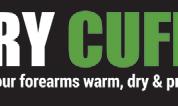


- DairyNZ Directors Remuneration

Invitation for 2023 candidate nominations – three positions available. In October, elections will take place for:
• Two farmer-elected directors for the Board of DairyNZ Incorporated.
• One farmer-elected member for the DairyNZ Directors’ Remuneration Committee. Current levy-paying dairy farmers are invited to nominate candidates to fill these three positions.

All farmers paying a levy on milksolids to DairyNZ are eligible to stand for election. An information pack outlining desired criteria and nomination requirements for the position can be obtained from the Returning Officer. Nominations must be received by the Returning Officer by 12 noon on Friday, 25 August 2023.
Elections
If more than the required nominations are received, elections will be carried out by postal voting using the STV (single transferable vote) voting method. Votes will be weighted by annual milksolids production. Voting credentials will be posted to all registered DairyNZ levy payers on 11 September 2023, with voting closing at 12 noon on Tuesday, 10 October 2023.

The DairyNZ Annual General Meeting will be held on Wednesday, 11 October 2023. Election results will be announced at the meeting.
For further details contact the Returning Officer below.
Anthony MortonReturning
Officer0800 666 935

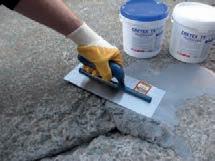


iro@electionz.com

– DairyNZ Incorporated





After having to stay home last June due to covid, National Fieldays was held at the end of November instead, which meant many farmers who were busy down on the farm could not make their regular pilgrimage.
The event, which usually attracts more than 100,000 visitors and more than 1000 exhibitors and generates hundreds of millions of dollars in sales revenue for New Zealand firms, was back this June and by all accounts was another successful event. Several people have told me it is good to have Fieldays back in its regular slot on the calendar.
With this being the first winter event with the international borders open since 2020, Fieldays brought together individuals, business leaders and decision-makers from various corners of the globe to create invaluable relationships and partnerships that will facilitate knowledgesharing and champion New
Zealand-led innovation.
“It’s been a truly wonderful four days,” New Zealand National Fieldays Society chief executive Peter Nation said.

“When the gates opened on Wednesday morning under a blanket of fog and sun and positivity on the horizon, the buzz was great, and you could feel the positivity and excitement within hours of opening.
“In the face of economic and regulatory changes ahead for the primary sector, there was a profound spirit of camaraderie and buoyancy.”
Congratulations to Tangaroa Walker, pictured. He’s a dairy farmer, industry leader and farming advocate from Southland and the winner of the Ravensdown Agricultural Communicator of the Year Award.
Many of you may remember him on the cover of Dairy Farmer in September 2019, when he had not long started his Farm4Life Facebook group. This has now grown to more than 144,000 members. He has written a book and
regularly posts informative and inspiring videos showing all aspects of dairy farming and life on the farm.
Keep up the fantastic work, Tangaroa.
July marks the five-year anniversary of AgriHQ and in August Dairy Farmer will celebrate its fifth anniversary of publishing. In the past five years, we have redesigned the cover and pages, introduced new sections in the magazine and brought you hundreds of stories about farmers who have been willing to share what they are doing in the hope it may help others or, at the very least, give other farmers ideas.
Dairy Farmer has gone from strength to strength as has AgriHQ, which started out with just Farmers Weekly –the country’s most respected, trusted and reliable source of agricultural news and information, delivered to more than 77,000 rural mailboxes every week. Along with Dairy Farmer, our family includes livestock reports, industry reports, saleyard previews
and reports, On Farm Story
– telling the New Zealand story, one farmer at a time –WeatherWatch with weather insights from Phil Duncan, Ag&Ed, podcasts and more.
Winter has definitely arrived with storms, snow and even more rain in parts of the country. This is usually a good time to wrap up in front of the fire with a good read but, unfortunately, the farm work never stops, with maintenance and cleaning as well as feeding out and shifting stock.
And of course, calving is just around the corner, so many are preparing for the season ahead. I have yet to hear of any early calves so cows appear to be holding on – but as farmers know, cows love to drop their calves when the weather is at its absolute worst.
Good luck for the new season.
SonitaLike us: farmersweekly.co.nz
Follow us: @DairyFarmer15
Read us anywhere: farmersweekly.co.nz
July 4 – DairyNZ
Feed Budgeting and Management Workshop, Grey Valley
Get to grips with developing and implementing a spring pasture plan for your farm using the Spring Rotation Planner. Info at www.dairyevents.co.nz
July 6 – Dairy Women’s Network
Beyond the Great Resignation
How do we retain our employees in this current highly competitive market?

Explore powerful leadership and coaching strategies. Info at www.dwn.co.nz/events
July 11 – DairyNZ
East Chatton Winter Tour 2023
Get off the farm for a look around the area at different wintering systems and a social catch-up afterwards. Info at www.dairyevents.co.nz
July 11 – Dairy Women’s Network
Employment Questions Answered, webinar
Have you got a burning question around employment?
Join us for this LIVE webinar with Steve Franklin from Hamertons Lawyers. Info at www.dwn.co.nz/events
July 12 – DairyNZ
Taranaki Organics Pre-Calving Group
Join us for a catch-up before spring
Conna Smith is kindly hosting us for our Organics pre-calving discussion group. We will talk about key issues and reminders leading into calving. Info at www.dairyevents.co.nz
July 12 – DairyNZ
New Farm Sensor Systems – a Technology Field Day
Learn about new sensor technologies at this Lincoln University Research Farm field day
A great range of speakers will talk about results from an experiment investigating the potential of wearable data for pasture management. Five different wearable systems were utilised in the study. Info at www.dairyevents.co.nz
July 18 and 20 – Dairy Women’s Network
Today’s Calf, Tomorrow’s Cow, Canterbury and Southland
The difference that good rearing practice can make. The importance of rearing heifers well, what the opportunities are, improved growth rates and long-term performance. Feel prepared and ready for the calf-rearing season as SealesWinslow and AgriVantage take you through best practice to maximise calves’ potential right from day 1. We will have a panel discussion with a local dairy farmer to share their learning and experiences.
Info at www.dwn.co.nz/events
July 19 and 21 – DairyNZ Management Development Group, North Otago and Darfield
Are you interested in joining a group focusing on enhancing your business skills and understanding of finances and the challenges you’re facing?
We are starting a group in North Otago for farm managers, contract milkers and VOSM – this is a great chance to upskill, network and benchmark with people at a similar stage in their farming careers.
Info at www.dairyevents.co.nz
Ospri
NAIT and MINDA: Working together, various dates and locations Join us for a workshop on how to get the best out of NAIT and MINDA.
OSPRI and LIC will show you how NAIT and MINDA can work together to help with all your herd movements, so you are always up with the regulations. They will also answer any questions you may have.
Info at www.ospri.co.nz/upcoming-events/
DairyNZ Composting barns
Southland Composting Barn Tour, various dates and locations
This Southland Tour is part of our winter series across the province looking at Composting Barns in operation across the south.
CalvingSmart
Set yourself up for a successful calving season with CalvingSmart – various dates and locations. Hone your calving skills and learn the latest tips and techniques at an in-person workshop designed to build your confidence this calving season.
Delivered by Dairy Training Limited, CalvingSmart workshops are designed for those with up to three years of experience on farm, equipping you with the right knowledge and skills to establish a caring, healthy and safe environment for calves.
Taranaki – various times, dates and locations
The Taranaki Regional Council’s Nitrogen Reporting deadline is July 31 2023.
Need help getting your farm records sorted by then? Come along to one of our drop-in sessions and we’ll help you complete your N reporting.
Info at www.dairyevents.co.nz
Need

Pop
